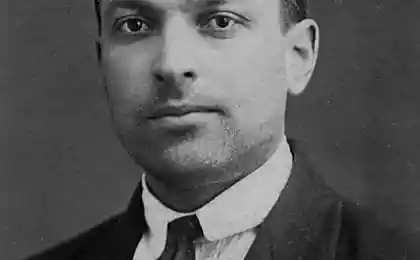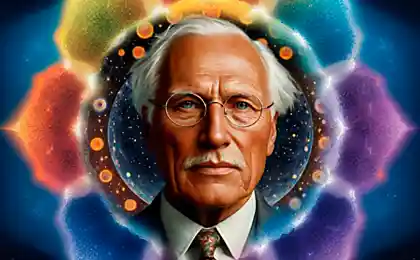612
The mysteries of the human psyche in extreme conditions
In may 1885 yacht "Mypanel", EN route from Southampton to Sydney, caught in a severe storm. To save her failed and the crew of captain Thomas Dudley, his assistant Edwin Stephens, seaman Edmund Brooks, and cabin boy Richard Parker was moved to 5-metre skiff. It had no masts nor sails. There was no water and food, except for two packets of turnips.
Ten million four hundred seventy one thousand three hundred seventy seven
© Ferdinand Victor Eugène Delacroix
On the eighteenth day, it became clear that all would die, if not soon help arrives. They cast lots: the loser had to give himself to be eaten. But the case took a different turn. The captain and his assistant decided that the first victim will be half-dead from exhaustion Jung. Dudley came to Jung with a knife and slit his throat. Survivors first ate liver and took out the heart...
Five days after that to Board the boat approached the German barque "Montezuma". The crew of the ship froze in horror, looking at the bloody skiff with three victims and severed body of a man.
In 1956 the training sailing ship "Pamir", owned by Germany, was overturned during a storm in the Atlantic ocean. The team managed to land in boats, but due to the lack of discipline was a panic. The boats scattered and filled with water. 80 people were killed, and only five were rescued, while the rescue came on the second day!
In late 1959, during a storm in the Indian ocean sank the British ship "Razbam". The passengers and crew — a total of 30 people — managed to get into the boat, in which were supplies of water and provisions. However, after 26 days, when the boats approached the shore of the island of Sumatra, survived only six. The rest were killed by their fellow prisoners, or went mad from the experience.
The intelligence in the ocean
What happens to the people caught in the boat or on a raft in a raging ocean? Why do some die on the second or third day, with food and water while others remain alive after six months or more almost? What is the true cause of death of the victim of the shipwreck? What dangers he might face in the open sea?
To explore the conditions faced by people trapped in the wreck on the rescue funds, the French doctor Alain Bombing in September 1952 made an incredible experiment. Without water and food he sailed from Las Palmas (Canary Islands) in a single voyage across the Atlantic on a small inflatable boat "Heretic". The researcher completed the swim after 65 days on the island of Barbados.
All this time he ate only fish. Quenched their thirst with the juice squeezed out of fish, or sea water. The traveler has lost 25 kg, has suffered a number of severe diseases, by the end of the voyage, the amount of hemoglobin in his blood was close to lethal values, the nails on the toes fell out.
Nineteen million eight hundred ninety thousand seven hundred sixty five
The main conclusion made by Bombing, for the survival of shipwreck victims is not so much food and water as psychological factor. People kills fear! Therefore, the slogan "don't give up!"must be a moral life jacket each in distress at sea (and not only at sea). Survives the one who really wants to live.
Wanting to continue the work begun by A. Bombing by the decision of the problems connected with the shipwreck, a Liberian doctor Hannes Lindemann October 26, 1955, was released in his first solo transatlantic flight, a Voyage he made on the West African boat-cake 7 metres long, 80 cm wide and 76 cm, hollowed from a single tree trunk. This frail little boat named the "Liberia-P", he went sailing off the West coast of Africa to Haiti for 119 days.
During his expedition Lindemann collected extensive material, which is intended to be used for his intended main journey. Here is what he wrote about his first experience: "Summing up the first trip, I was left unsatisfied. I was not able to solve the problem associated with moral as a castaway. During the voyage I have repeatedly been on the verge of despair...»
Second voyage Lindemann carried out on a small folding boat, "Liberia III." Its length was 5 m 20 cm Place of departure Liberian chose Las Palmas in the Canary Islands. So he threw down the gauntlet of competition A. the Bombing. It should be noted that Lindemann sailed from Las Palmas about the route of the French doctor on 20 October 1956.
At this time, the share of Liberian suffered tremendous hardships. In December a flurry of knocked over a little "Liberia", and only by morning of the next day price of superhuman effort, losing consciousness, the doctor was able to turn the boat. Extremely exhausted and exhausted it through 72 days landed on the island of Saint Martin, in the group of the lesser Antilles. It happened on 30 December 1956.
The experiment was successfully completed. Sailing conditions Lindemann were very close to those experienced by a shipwrecked. Repeatedly the Navigator-single a situation giving cause for despair, but he always found the strength to escape from the clutches of death.
If people didn't panic — he warned the tragedy. This is the conclusion of the Liberian.
Names of brave doctors and bombing of the A. X. Lindemann has gone down in the annals of single voyages. But the main thing is different: the results of the experiments conducted, the impetus for extensive research in many "sea countries", with the involvement of major scientists and institutions involved in rescue of human life at sea.
It should also be noted that the scene of the wanderings of the French and Liberian doctors were serving the Atlantic ocean where, according to official statistics, there is the greatest number of accidents.
Jose Salvador, Alvarenga, was found in January 2014, the Marshall Islands (Pacific ocean) for 16 months survived in the open ocean, feeding on fish and turtle blood. He argues that his companion refused to eat such food. Ezekiel died 4 months later from exhaustion and dehydration. The alvarenga then wanted to commit suicide, but couldn't.
Twenty million four hundred ten thousand three hundred thirty five
Castaway
The recommendations of distress, formulated by experts of the world health organization, are as follows.
If you are not a leader of any group, just follow the instructions of others. Try to stay cheerful and confident. Discipline and presence of mind is very important in such situations.
If you have a cure for motion sickness, take it.
The most dangerous enemy is the cold. Wear as much wool they will keep you warm while you are in the water or on a raft.
If the accident occurred in the South seas, beware of heat stroke, try to hide in the shadows and wet clothes to reduce sweating and keep water in the body.
In the first days after the shipwreck, do not drink the water, and then consume not more than 500 ml of fresh water per day. When the water comes to an end, reduce the daily rate of up to 100 ml.
Never drink sea water. Even if fresh water a little, mix with the sea. Sea-water sometimes moisten the mouth, but always tempted to swallow it. That is why this method should be resorted to only people with a strong will.
Source: /users/1077
Ten million four hundred seventy one thousand three hundred seventy seven
© Ferdinand Victor Eugène Delacroix
On the eighteenth day, it became clear that all would die, if not soon help arrives. They cast lots: the loser had to give himself to be eaten. But the case took a different turn. The captain and his assistant decided that the first victim will be half-dead from exhaustion Jung. Dudley came to Jung with a knife and slit his throat. Survivors first ate liver and took out the heart...
Five days after that to Board the boat approached the German barque "Montezuma". The crew of the ship froze in horror, looking at the bloody skiff with three victims and severed body of a man.
In 1956 the training sailing ship "Pamir", owned by Germany, was overturned during a storm in the Atlantic ocean. The team managed to land in boats, but due to the lack of discipline was a panic. The boats scattered and filled with water. 80 people were killed, and only five were rescued, while the rescue came on the second day!
In late 1959, during a storm in the Indian ocean sank the British ship "Razbam". The passengers and crew — a total of 30 people — managed to get into the boat, in which were supplies of water and provisions. However, after 26 days, when the boats approached the shore of the island of Sumatra, survived only six. The rest were killed by their fellow prisoners, or went mad from the experience.
The intelligence in the ocean
What happens to the people caught in the boat or on a raft in a raging ocean? Why do some die on the second or third day, with food and water while others remain alive after six months or more almost? What is the true cause of death of the victim of the shipwreck? What dangers he might face in the open sea?
To explore the conditions faced by people trapped in the wreck on the rescue funds, the French doctor Alain Bombing in September 1952 made an incredible experiment. Without water and food he sailed from Las Palmas (Canary Islands) in a single voyage across the Atlantic on a small inflatable boat "Heretic". The researcher completed the swim after 65 days on the island of Barbados.
All this time he ate only fish. Quenched their thirst with the juice squeezed out of fish, or sea water. The traveler has lost 25 kg, has suffered a number of severe diseases, by the end of the voyage, the amount of hemoglobin in his blood was close to lethal values, the nails on the toes fell out.
Nineteen million eight hundred ninety thousand seven hundred sixty five
The main conclusion made by Bombing, for the survival of shipwreck victims is not so much food and water as psychological factor. People kills fear! Therefore, the slogan "don't give up!"must be a moral life jacket each in distress at sea (and not only at sea). Survives the one who really wants to live.
Wanting to continue the work begun by A. Bombing by the decision of the problems connected with the shipwreck, a Liberian doctor Hannes Lindemann October 26, 1955, was released in his first solo transatlantic flight, a Voyage he made on the West African boat-cake 7 metres long, 80 cm wide and 76 cm, hollowed from a single tree trunk. This frail little boat named the "Liberia-P", he went sailing off the West coast of Africa to Haiti for 119 days.
During his expedition Lindemann collected extensive material, which is intended to be used for his intended main journey. Here is what he wrote about his first experience: "Summing up the first trip, I was left unsatisfied. I was not able to solve the problem associated with moral as a castaway. During the voyage I have repeatedly been on the verge of despair...»
Second voyage Lindemann carried out on a small folding boat, "Liberia III." Its length was 5 m 20 cm Place of departure Liberian chose Las Palmas in the Canary Islands. So he threw down the gauntlet of competition A. the Bombing. It should be noted that Lindemann sailed from Las Palmas about the route of the French doctor on 20 October 1956.
At this time, the share of Liberian suffered tremendous hardships. In December a flurry of knocked over a little "Liberia", and only by morning of the next day price of superhuman effort, losing consciousness, the doctor was able to turn the boat. Extremely exhausted and exhausted it through 72 days landed on the island of Saint Martin, in the group of the lesser Antilles. It happened on 30 December 1956.
The experiment was successfully completed. Sailing conditions Lindemann were very close to those experienced by a shipwrecked. Repeatedly the Navigator-single a situation giving cause for despair, but he always found the strength to escape from the clutches of death.
If people didn't panic — he warned the tragedy. This is the conclusion of the Liberian.
Names of brave doctors and bombing of the A. X. Lindemann has gone down in the annals of single voyages. But the main thing is different: the results of the experiments conducted, the impetus for extensive research in many "sea countries", with the involvement of major scientists and institutions involved in rescue of human life at sea.
It should also be noted that the scene of the wanderings of the French and Liberian doctors were serving the Atlantic ocean where, according to official statistics, there is the greatest number of accidents.
Jose Salvador, Alvarenga, was found in January 2014, the Marshall Islands (Pacific ocean) for 16 months survived in the open ocean, feeding on fish and turtle blood. He argues that his companion refused to eat such food. Ezekiel died 4 months later from exhaustion and dehydration. The alvarenga then wanted to commit suicide, but couldn't.
Twenty million four hundred ten thousand three hundred thirty five
Castaway
The recommendations of distress, formulated by experts of the world health organization, are as follows.
If you are not a leader of any group, just follow the instructions of others. Try to stay cheerful and confident. Discipline and presence of mind is very important in such situations.
If you have a cure for motion sickness, take it.
The most dangerous enemy is the cold. Wear as much wool they will keep you warm while you are in the water or on a raft.
If the accident occurred in the South seas, beware of heat stroke, try to hide in the shadows and wet clothes to reduce sweating and keep water in the body.
In the first days after the shipwreck, do not drink the water, and then consume not more than 500 ml of fresh water per day. When the water comes to an end, reduce the daily rate of up to 100 ml.
Never drink sea water. Even if fresh water a little, mix with the sea. Sea-water sometimes moisten the mouth, but always tempted to swallow it. That is why this method should be resorted to only people with a strong will.
Source: /users/1077























